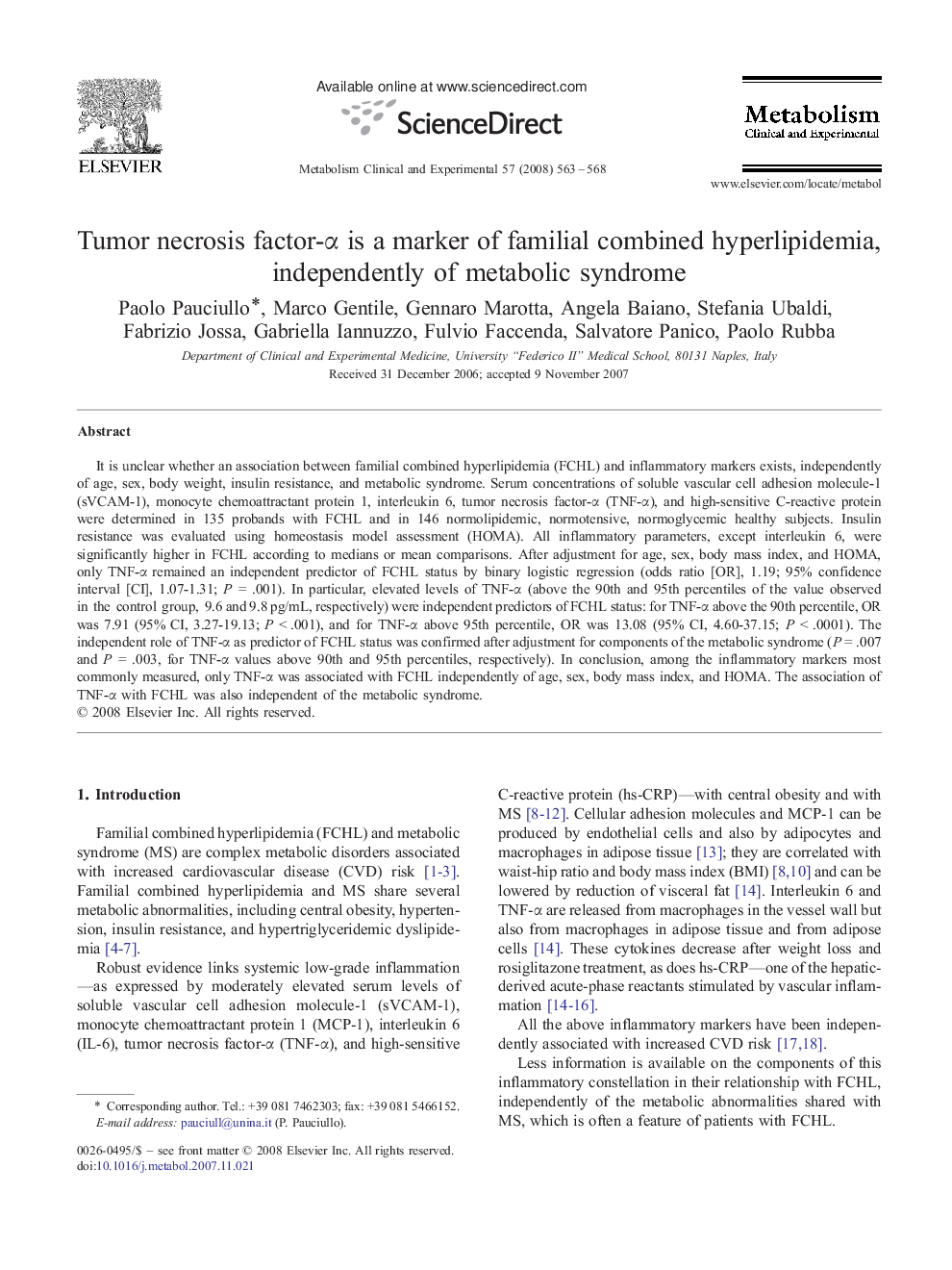| Article ID | Journal | Published Year | Pages | File Type |
|---|---|---|---|---|
| 2807434 | Metabolism | 2008 | 6 Pages |
Abstract
It is unclear whether an association between familial combined hyperlipidemia (FCHL) and inflammatory markers exists, independently of age, sex, body weight, insulin resistance, and metabolic syndrome. Serum concentrations of soluble vascular cell adhesion molecule-1 (sVCAM-1), monocyte chemoattractant protein 1, interleukin 6, tumor necrosis factor-α (TNF-α), and high-sensitive C-reactive protein were determined in 135 probands with FCHL and in 146 normolipidemic, normotensive, normoglycemic healthy subjects. Insulin resistance was evaluated using homeostasis model assessment (HOMA). All inflammatory parameters, except interleukin 6, were significantly higher in FCHL according to medians or mean comparisons. After adjustment for age, sex, body mass index, and HOMA, only TNF-α remained an independent predictor of FCHL status by binary logistic regression (odds ratio [OR], 1.19; 95% confidence interval [CI], 1.07-1.31; P = .001). In particular, elevated levels of TNF-α (above the 90th and 95th percentiles of the value observed in the control group, 9.6 and 9.8 pg/mL, respectively) were independent predictors of FCHL status: for TNF-α above the 90th percentile, OR was 7.91 (95% CI, 3.27-19.13; P < .001), and for TNF-α above 95th percentile, OR was 13.08 (95% CI, 4.60-37.15; P < .0001). The independent role of TNF-α as predictor of FCHL status was confirmed after adjustment for components of the metabolic syndrome (P = .007 and P = .003, for TNF-α values above 90th and 95th percentiles, respectively). In conclusion, among the inflammatory markers most commonly measured, only TNF-α was associated with FCHL independently of age, sex, body mass index, and HOMA. The association of TNF-α with FCHL was also independent of the metabolic syndrome.
Related Topics
Life Sciences
Biochemistry, Genetics and Molecular Biology
Endocrinology
Authors
Paolo Pauciullo, Marco Gentile, Gennaro Marotta, Angela Baiano, Stefania Ubaldi, Fabrizio Jossa, Gabriella Iannuzzo, Fulvio Faccenda, Salvatore Panico, Paolo Rubba,
